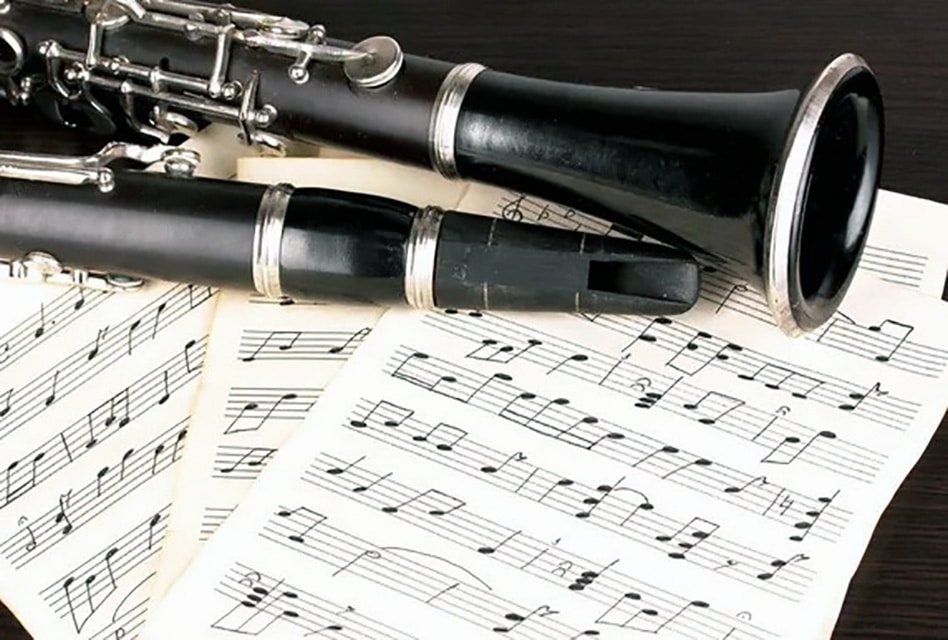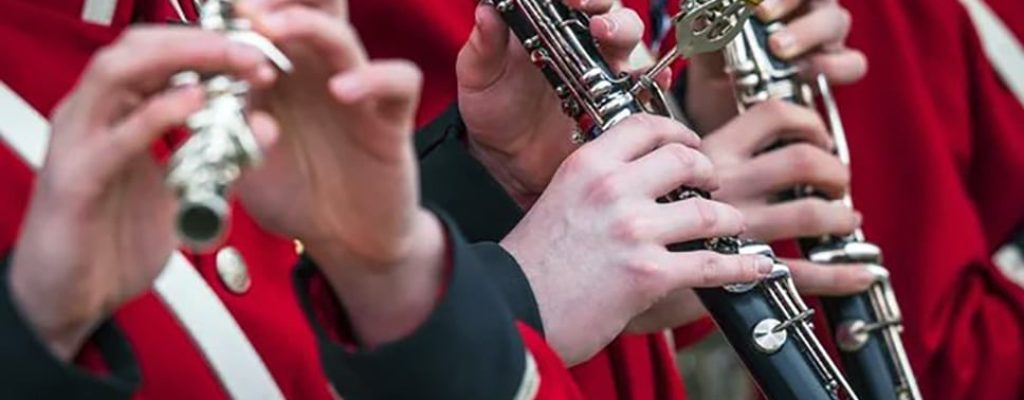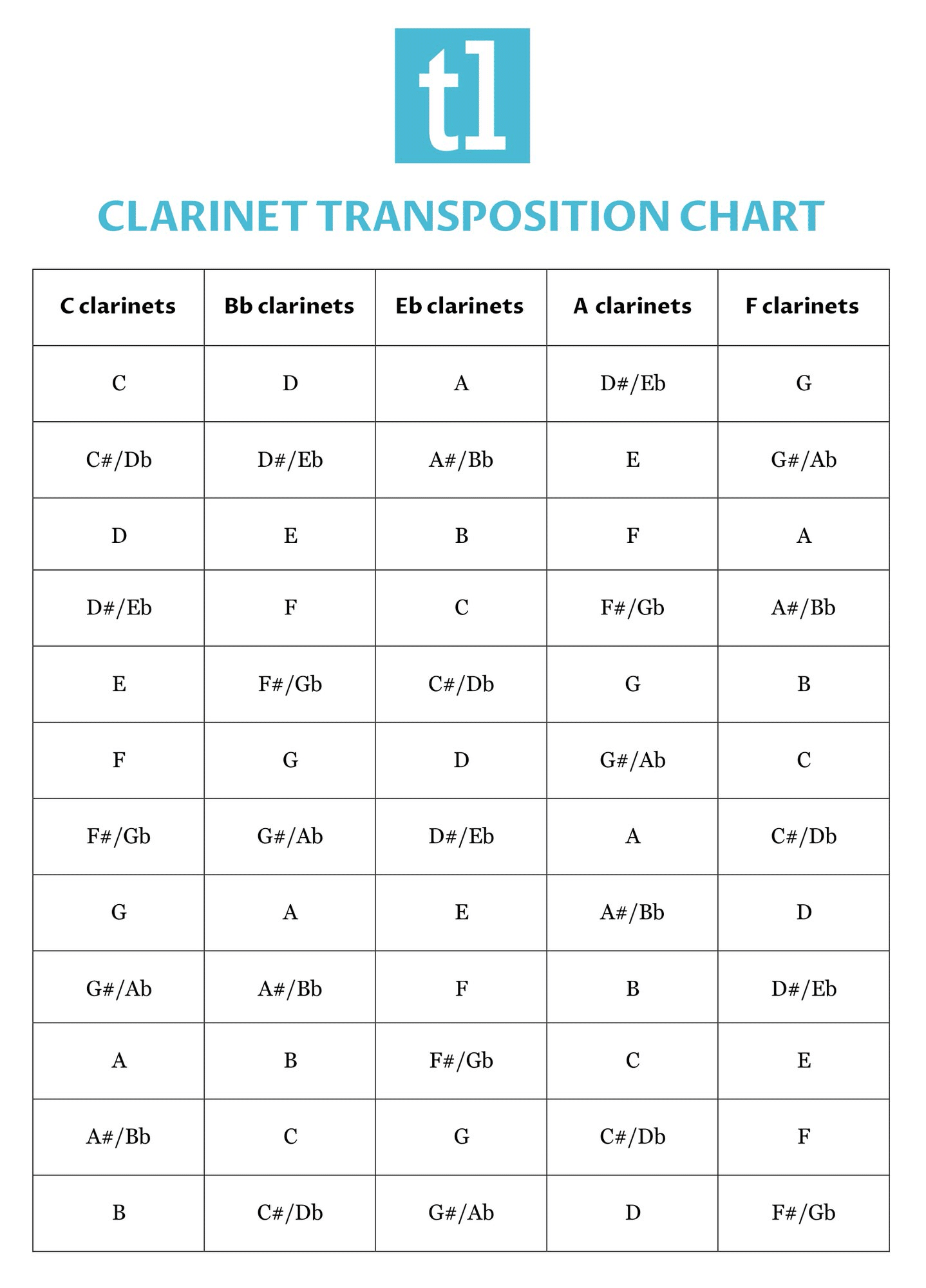The clarinet has taken me on an exciting adventure through the magical lands of classical, jazz, and pop music, and I must say, music is an amazing and delightful world!
Now, let’s talk about a little something that’s both intriguing and occasionally befuddling: the Clarinet in a transposition chart.
Navigating the labyrinth of clarinet transposition can be like trying to find your way out of a musical maze, but fret not!
In this article, I’ll be your trusty guide, leading you through the twists and turns of understanding the Clarinet in A and its transpositional wonders.
By the time we’re done here, you’ll be wielding your clarinet with the confidence of a musical maestro, ready to conquer any key that comes your way.
Understanding Clarinet Transposition
As a clarinet player, you’ll encounter the concept of transposition in music. The clarinet is considered a transposing instrument, meaning the note you see on the sheet music isn’t always the note you hear.
For example, the B-flat clarinet is called so because when you play a written C, the sound produced is a B-flat at concert pitch.
Transposing instruments have this unique feature to make them compatible with musical ensembles and easier to read for performers. Here’s a brief comparison between written notes and concert pitch for some common clarinet types:
Clarinet Type —– Written Note —– Concert Pitch
B-flat Clarinet C B-flat
A Clarinet C A
Remember, when you see a C on your sheet music, you don’t always play the note C depending on your clarinet type. For B-flat clarinets, you play a B-flat; for A clarinets, you play an A.
Clarinet Transposition in Ensembles
Since various instruments have different key signatures, transposing allows musicians to play harmoniously, even if their instruments are in different keys.
Here are some practical steps for successfully transposing clarinet music within an ensemble:
Identify the key signature of your part and the corresponding concert pitch key.
Determine the appropriate transposition for your specific clarinet (B-flat or A).
Adjust the notes in your sheet music by moving them up or down to match the desired concert pitch.
Transposition might seem tricky at first, but with practice, you’ll soon be able to adjust your sheet music quickly and effectively.
Transposition Chart Details
Reading a Transposition Chart
Transposition charts are handy guides to navigate the world of music keys, especially when working with different instruments like the clarinet. They help you understand which notes change when you switch between clarinet keys.
To read a transposition chart, you’ll encounter rows and columns that display instrument keys and their corresponding transpositions.
Clarinet Keys and Their Transpositions
Clarinet keys and their transpositions are essential in understanding charts and adapting music for different types of clarinets. Here’s a concise list of the main clarinet keys and how you’ll need to transpose them:
Bb Clarinet (B-flat instrument): This is the most common clarinet key. In this case, when reading music written for C instruments, you’ll need to transpose up a whole step (2 half steps).
Eb Clarinet: You must transpose up a minor third (3 half steps) when transposing from a C instrument.
A Clarinet: You must transpose down a minor third (3 half steps) to transpose from a C instrument.
F Clarinet: Although rarer, if you’re working with an F clarinet, you’ll need to transpose down a perfect fifth (7 half steps) from a C instrument.
It’s important to remember that transposition also involves shifting key signatures and considering any accidentals in the original key.
Mastering these transpositions will help you better handle music arrangements and ensure your pitch-perfect clarinet performance!
Practical Applications
Score Preparation
When preparing a music score, it’s essential to understand the concept of transposition, especially when writing for transposing instruments like the clarinet.
By incorporating your music theory knowledge, you can ensure that each part is written in the correct key, optimizing communication and collaboration among musicians, band directors, and conductors.

For example, here’s a simple guideline table to help you transpose for common clarinets:
Written Pitch — Concert Key (Sounding Pitch)
C – Bb (Bb Clarinet)
C – A (A Clarinet)
C – Eb (Eb Clarinet)
Transposing for Different Clarinets
The clarinet family includes various instruments, each with different keys and pitching mechanisms. Some are transposing instruments (but not the C clarinet, which is a non-transposing instrument!)
Some practical tips for easier clarinet transposition:
Transpose the written pitch up a whole step
Transpose the written pitch up a minor third
Transpose the written pitch down a minor third
Communication with Band and Orchestra
Understanding the differences between written and sounding pitches can greatly improve your musical skills and contribute to an effective rehearsal or performance experience.
Ensure to stay vigilant during rehearsals to catch potential transposition errors, leading to a smoother and more enjoyable collaboration.

Remember, practicing and understanding the various clarinet transpositions will enhance your abilities as a musician or score preparer and foster a more harmonious and successful ensemble experience.
3 Best Clarinets in the Market Today
Elkhart 100CL Student Clarinet

COMES WITH: Complete with a backpack style case and cleaning accessories
FEATURES:
- Produces a clear, rich sound
Elkhart 100CL Student Clarinet
- Light and durable
- Excellent value for money
- Includes everything that you need to get started
- No adjustable thumb-rest
When you click ‘Check Price’, you’ll see there are loads of great places to buy this item. Our personal favorite is Sweetwater for the US, and Thomann and Gear4Music for the UK & Europe.
They are the largest music retailers, with excellent customer service, competitive prices, really fast shipping, and the longest guarantees.
The professional musician who wrote this article combined many things,
from the product build, manufacturer’s reputation through to feedback
from other users, to create our famous TedScore™.
playLITE Clarinet by Gear4music

COMES WITH: Red or Blue
FEATURES:
- Adjustable thumb rest for added comfort
-Includes everything that you need to get started!
playLITE Clarinet by Gear4music
- Durable and easy to clean
- Comes in a lightweight backpack style case
- A good price for a starter clarinet
- The keywork is easy to bend, so be careful!
When you click ‘Check Price’, you’ll see there are loads of great places to buy this item. Our personal favorite is Sweetwater for the US, and Thomann and Gear4Music for the UK & Europe.
They are the largest music retailers, with excellent customer service, competitive prices, really fast shipping, and the longest guarantees.
The professional musician who wrote this article combined many things,
from the product build, manufacturer’s reputation through to feedback
from other users, to create our famous TedScore™.
Yamaha YCL255S Student Bb Clarinet

FEATURES: Durable body with an attractive matte finish
OTHER INFO: Has an adjustable thumb-rest for proper technique
Yamaha YCL255S Student Bb Clarinet
- With a new bell with improved response and projection
- Comes with silver-plated nickel silver keys for added luxury
- Perfect for wind bands or orchestras
- Comes with a lightweight carry case and a Yamaha 4C mouthpiece
- A little expensive for a beginner instrument
When you click ‘Check Price’, you’ll see there are loads of great places to buy this item. Our personal favorite is Sweetwater for the US, and Thomann and Gear4Music for the UK & Europe.
They are the largest music retailers, with excellent customer service, competitive prices, really fast shipping, and the longest guarantees.
The professional musician who wrote this article combined many things,
from the product build, manufacturer’s reputation through to feedback
from other users, to create our famous TedScore™.
Clarinet In A Transposition Chart
Important Points
It’s incredible how the world of transposing instruments offers a unique challenge, especially when encountering the clarinet family. As you have learned, the clarinet in A is an essential instrument to master.
So, let’s quickly look at some crucial points to remember when working with clarinet transposition.
Apart from the standard Bb clarinet, you may also encounter the A, Eb, and bass clarinets during your musical journey.
When transposing for clarinets, remember that the Bb clarinet plays a whole step lower, the A clarinet a minor third higher, and the Eb clarinet minor third lower than the written pitch.
For easy reference, here’s a handy table to help you remember the transpositions:
Instrument ——— Transposition
Clarinet in Bb – Whole step lower
Clarinet in A – Minor third lower
Clarinet in Eb – Minor third higher
As you continue to grow, practice and understanding the keys are essential to becoming an accomplished musician.
Keeping open communication with other musicians and conductors can also help transposing instruments like the clarinet.
Lastly, don’t be afraid to explore! The clarinet’s versatility can introduce you to various genres and styles, making your musical journey even more exciting and fulfilling.
Next, you’ll want to read my new Beginner’s Guide To Learning The Clarinet.
FAQ's
The A clarinet is a transposing instrument, meaning that when a player reads a C on the sheet, the sound produced is in the key of A. This transposition allows the clarinet to blend with other instruments in various musical compositions seamlessly.
The most commonly used clarinet is pitched in the key of B-flat. This means that when a clarinet player reads a C on the sheet music, the note produced is a B-flat.
Clarinets are designed to be in the key of B-flat to simplify the instrument’s music notation and align with most music’s overall tonality. This transposition allows clarinetists to play alongside other instruments easily and provides a consistent clarinet sounds across various musical compositions.
Clarinets are available in different keys to accommodate different musical genres and compositions’ varying tonal and pitch requirements. This allows clarinetists to choose an instrument that best suits the specific musical context they are performing.













Love the practical applications section. It’s one thing to learn about these concepts in theory, but seeing how they’re applied in real-world music scenarios is super helpful. Kudos!
The section on score preparation was particularly insightful. As a band director, I’ve seen many students struggle with transposing for different clarinets. Tools and charts can be incredibly beneficial for beginners. However, I’ve also noticed a reliance on these aids can hinder the development of aural skills. Encouraging students to practice transposition by ear, in addition to using charts, could be a valuable addition to their learning process.
While the list of the 3 best clarinets in the market today provided by Kymia offers a good starting point for newcomers, I reckon the selection might be too narrow. The clarinet’s quality can vary significantly based on a musician’s personal style and the music genre they’re focusing on. It would be beneficial to discuss how different brands and models cater to various playing styles, especially in ensemble settings.
While this article provides an excellent overview, I think it’s crucial to highlight that not all clarinets will feel the same or produce the same sound quality, even with the correct transposition. The material of the instrument, the reed’s strength, and even the player’s embouchure can drastically affect the outcome.
yo, this part about transposing for different clarinets got me thinking. i play the sax, but i’ve been considering picking up the clarinet. are the skills super transferable? like, can I jump into clarinet with my sax background and get these transpositions down?
Absolutely! Many of the fingerings are similar, and understanding one helps with learning the other. Go for it!
reading about those clarinet keys and their transpositions was super helpful. i’ve been playing for a bit and never got it quite right till i read this. cheers, Kymia for breaking it down.
Yeah, getting the hang of transpositions opens up a lot of new pieces to play. Keep at it!
Really appreciated the section on transposition chart details, Kymia Kermani. It’s super useful for my students who are just getting started with clarinet in ensembles. Makes explaining so much easier!
hey, can someone explain how the clarinet transposition works in simple terms? gotta do a project on it and im kinda lost lol